Baikonur Cosmodrome, Lake Balkhash and the Shymbulak and Borovoe resorts have put Kazakhstan on the Central Asia tourism trail. But in what is the world’s ninth largest country, there are hundreds of places worth seeing.
Earlier this month, officials in Astana announced plans to launch an interactive digital map that will make visiting Kazakhstan all the more enticing. Developers of the project have already designed a list of sites that features roughly 700 objects in Kazakhstan.
Here are seven of them you probably did not know about:
Lake Kaindy
Located in the country’s southeastern Almaty Oblast, Lake Kaindy was created after parts of the Tien Shan mountain range collapsed and blocked the path of the Chilik River. As a result, hundreds of Tien-Shan spruces were destroyed, but their lofty trunks are still rising above the mirror surface of the lake. Though the water temperature here does not exceed 42.8 degrees Fahrenheit (6 degrees Celsius), Kaindy is of great popularity among local and foreign divers.
If you are traveling by car, the road to Kaindy Lake lies through the village of Zhalanash, east of Almaty. This option works only if your car is a sport utility vehicle, as the lake is hard to reach. To enjoy the enchanting view of the lake, you can also join a tour to Kaindy, which also includes breakfast, dinner, and trekking to the neighboring Kolsai Lakes.

Mausoleum of Khoja Ahmed Yasawi
The mausoleum was designed in honor of the ancient Turkic poet and preacher Khoja Ahmed Yasawi. The founder of the Timurid Empire, Amir Timur initiated the construction of the temple in the 14th century. Now, the mausoleum is the main object within the historical and cultural museum, dubbed Khazret-sultan. The brick dome of the mausoleum is one of the largest in central Asia.
The mausoleum can be reached easily by bus departing from the nearest city, Shymkent.
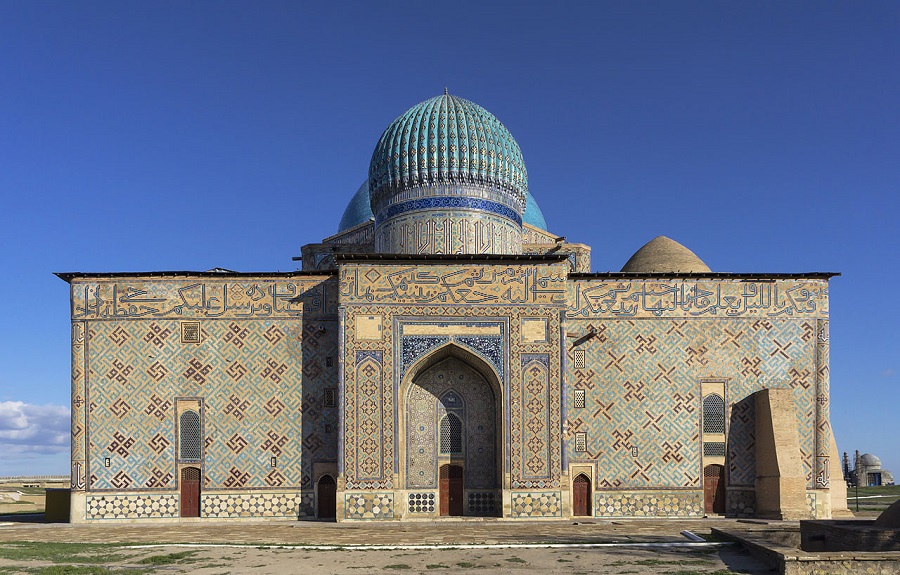
Bektau-Ata
An eye-catching rock massif located 70 kilometers to the north of Balkhash town, Bektau-Ata, is considered one of the most beautiful, but yet undiscovered sites in this region. Covering an area of about 9,884 acres, Bektau-Ata is home to hundreds of triangle-shaped rocks formed by never-ending wind gusts. The peak of the same name stands at 1,200 meters above the plain.
According to a legend, once upon a time the enemy attacked country’s far village, while its residents had to flee. A sage known as Bek led the people across the steppes and rivers until they reached a habitable valley, where they settled. The new village spanned the foot of the mountain, while the sage chose himself one of the caves as a home. Since then, this place is known as Bektau-Ata, which means “elder Bek’s mount” in Kazakh.
Bektau-Ata can be reached via the Almaty-Balkhash-Karaganda highway if you are traveling by car. For those without car, there are buses departing from the city of Karaganda.
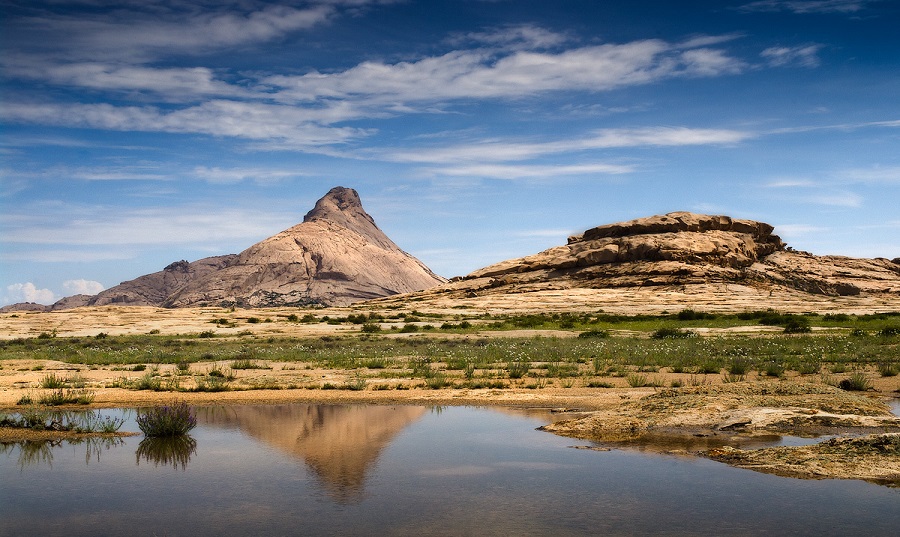
Lake Yazovoe
Dip into the elegant atmosphere of the Lake Yazovoe hidden in the heart of the Altai mountain range far in the eastern corner of Kazakhstan. The malachite surface of the lake reflects the giant Belukha Mountain once portrayed by Russia’s iconic artist, Nicholas Roerich, who has devoted the cycle of his works to the 4,500-meter high peak. Local residents say that algae growing on the bottom of the lake can heal people.
Lake Yazovoye is located on the territory of the Katon-Karagai National Nature Park, which can be reached by bus or by taxi from the bus terminal of Ust-Kamenogorsk city.

Beket-Ata Mosque
The underground mosque, located in the western corner of Kazakhstan, is one of the main shrines of the Mangystau region. Built in the late 18th century by Beket-Ata, a Kazakh religious scholar, this mosque consists of four rooms, while one of them has become a kind of burial vault for its creator. The Beket-Ata Mosque is a popular place of pilgrimage for those wishing to share their secrets and anxieties.
Travelers to Beket-Ata Mosque can there via the guided tour from Aktau, by hiring driver, or taking special pilgrim transport.

Lake Shaitankol
The mysterious Lake Shaitankol, which is known by locals as Devil’s Lake, lies 1,200 meters above sea level and is located five kilometers from Karkaralinsk, a northeastern city in Kazakhstan. The black surface of its water is surrounded by half-ruined rocks, which home pine forest grows. The name of the lake is no coincidence as the local residents believe this place is supposedly accompanied with kind of ‘devilry’ – some say people and animals get lost near Lake Shaitankol.
To visit the lake you can drive by M-36 highway, but if you do not have a car, then head to Karaganda where you can take a taxi or bus right to Karkaralinsk. The Lake Shaitankol lies five kilometers west of Karkaralinsk. The hiking trip takes about five hours.
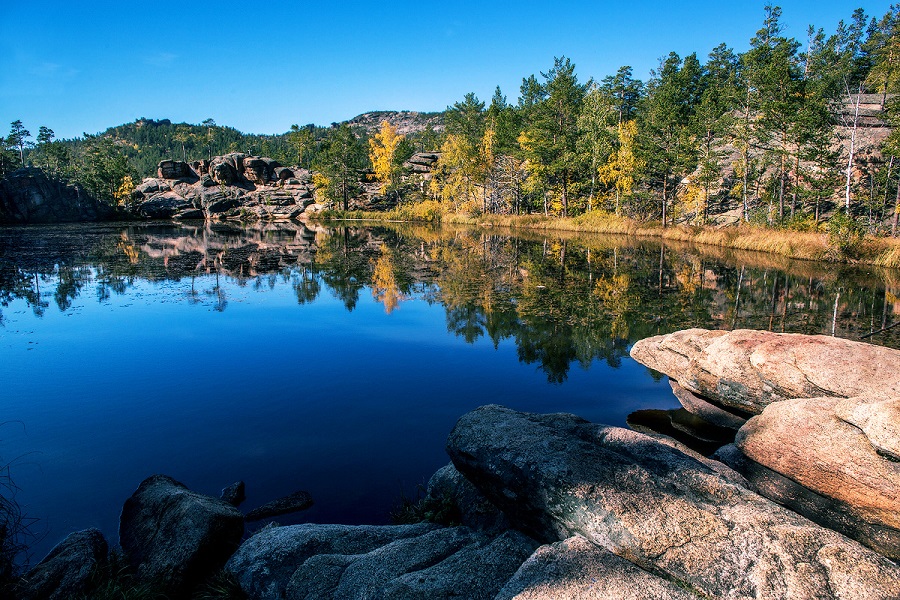
Boszhira
Boszhira, also known as Kazakhstan’s Arizona, is the part of the Ustyurt Plateau lying between the Aral Sea and the Amu Darya River in the east and the Mangyshlak Plateau and the Kara-Bogaz-Gol in the west. If you happened to arrive in the western part of Kazakhstan, enjoy a breathtaking view of Boszhira – the valley is covered with millions neatly carved white stones, including some silicon nuggets used by nomads to make arrows. Here you can also find the nameless mountain that inspired designers of the 1,000 denomination of Kazakhstani banknotes, or tenge.
The road to the Ustyurt Plateau is quite complicated due to the underdeveloped infrastructure. It is easier to attract a guide who will explain the route and will accompany you throughout the trip.
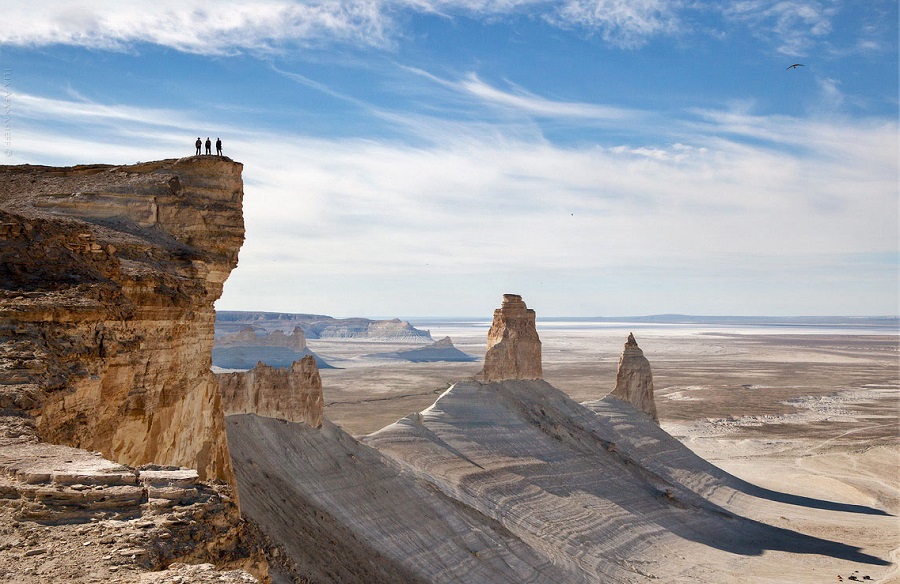


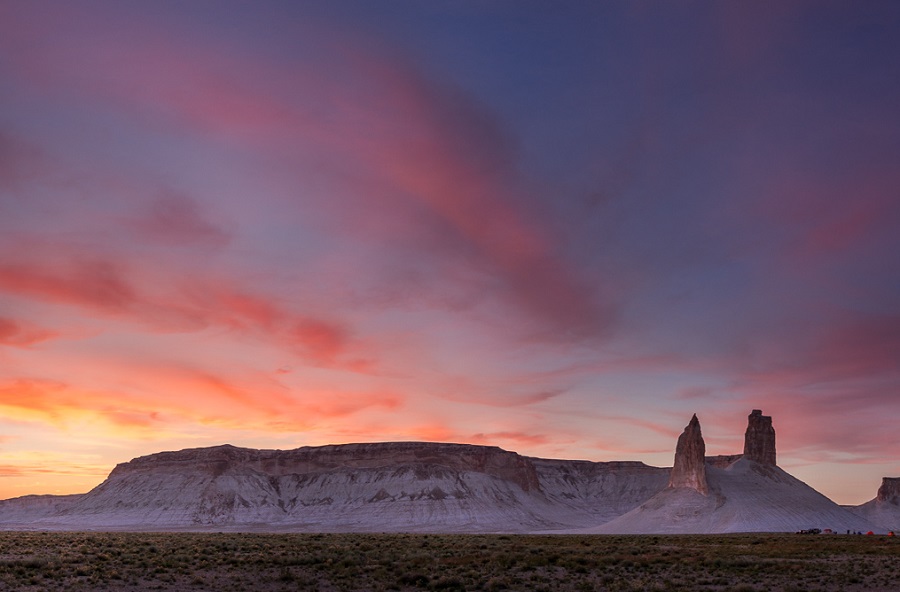




 Armenian sappers commenced on Monday mine-clearance operations in the territories adjacent to the Saint Mary Church in village of Voskepar (Armenia...
Armenian sappers commenced on Monday mine-clearance operations in the territories adjacent to the Saint Mary Church in village of Voskepar (Armenia...
 Iran and Pakistan have signed eight cooperation documents in various fields, and agreed to strengthen ties to fight terrorism in the region.
Iran and Pakistan have signed eight cooperation documents in various fields, and agreed to strengthen ties to fight terrorism in the region.
 President Aliyev emphasized the critical role of the North-South Transport Corridor in fostering transport cooperation between Azerbaijan and Russi...
President Aliyev emphasized the critical role of the North-South Transport Corridor in fostering transport cooperation between Azerbaijan and Russi...



